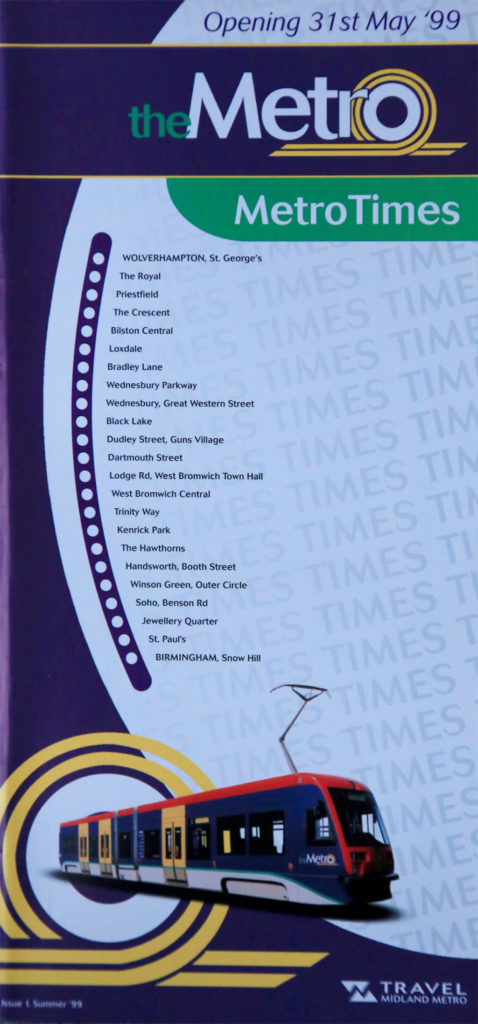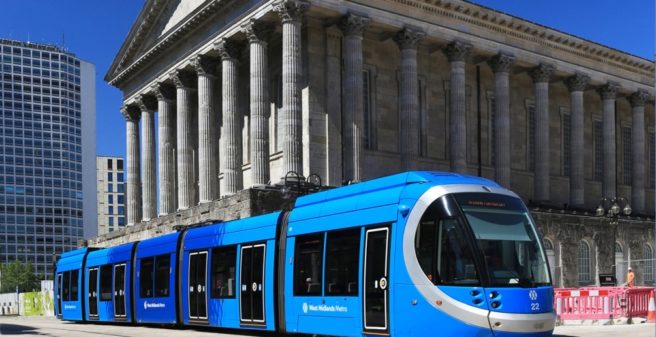
Now titled West Midlands Metro, the third new generation light rail system in the UK to feature street running opened to fare paying customers on 31 May 1999. This initial 20.4km line, referred to then as Midland Metro Line One, linked Birmingham Snow Hill heavy rail station with Wolverhampton city centre and was to have been the precursor of the network of routes across the West Midlands first proposed in 1984 by WMPTA (later renamed Centro), the transport authority for the region. It was not the first-choice route from the network plan but strong opposition from residents to other options elevated its priority, it being predominantly along a protected railway formation that had last seen passenger trains in 1972. The route was agreed in 1988 but delays in funding and the authority to go-ahead delayed the formal start of construction until 1995 although some utility diversion works had taken place previously. During construction of Line One, the network proposals were abandoned in favour of expanding Line One in ‘bite-sized’ chunks however it would be 2015 before the first of these extensions was opened.
Line One was developed by the Altram consortium on a design, build, operate and maintain basis. The consortium included principal contractor John Laing, Italian tram manufacturer Ansoldo/Firema and bus operator National Express whose subsidiary Travel Midland Metro held the operating concession. 16 Ansoldo/Firema trams formed the initial fleet enabling a service frequency of up to 10 departures per hour to be provided, these were replaced from 2014 with a fleet of 21 new CAF trams providing much needed additional capacity and anticipating the vehicle needs of the forthcoming extensions. The system’s headquarters and depot at Wednesbury was significantly enlarged in parallel with the delivery of the new fleet.
Picture gallery (please click to enlarge):
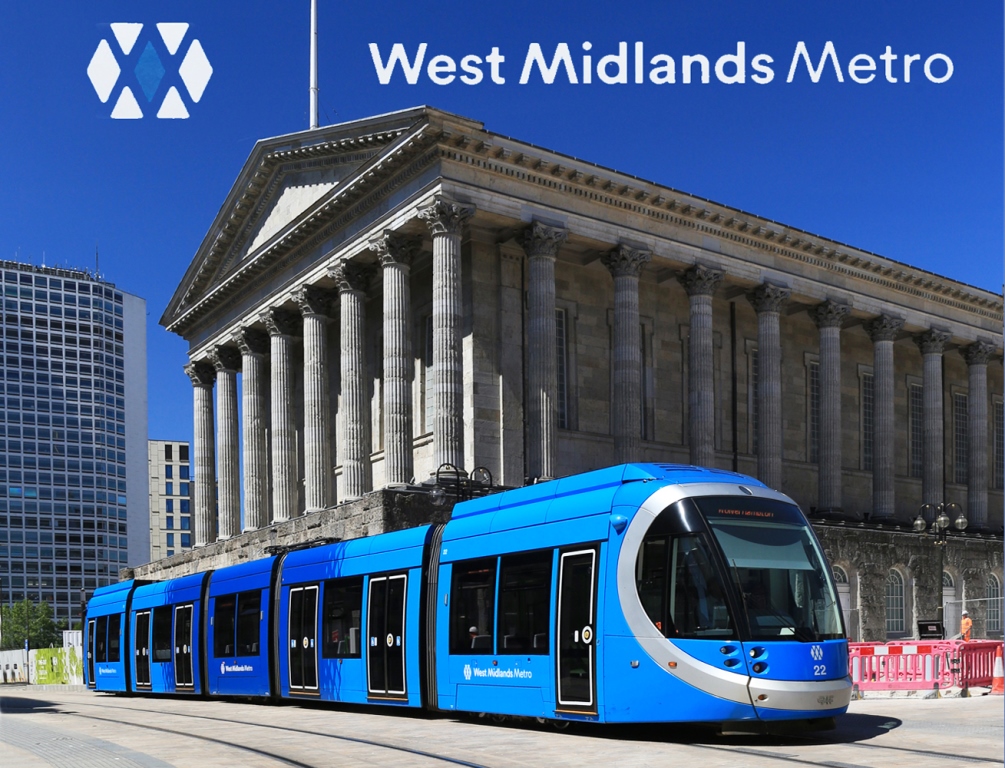
Blue tram under the blue skye: this is the corporate identity of the West Midlands Metro today I © David Cole

T69 tram 10 stands at the Birmingham Snow Hill terminus ready to form the first fare paying public tram departure from there at 0800 on 31 May 1999 I © David Cole 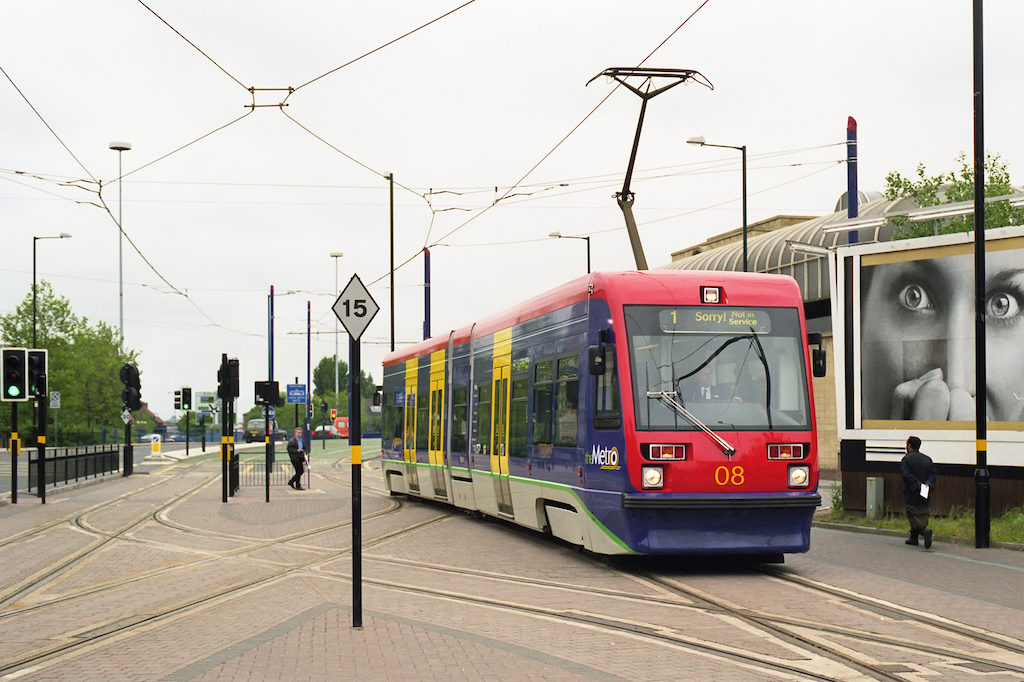
The official opening took place on 30 May 1999 after which a free public service was provided on which T69 tram 08 is arriving at Wolverhampton St Georges I © David Cole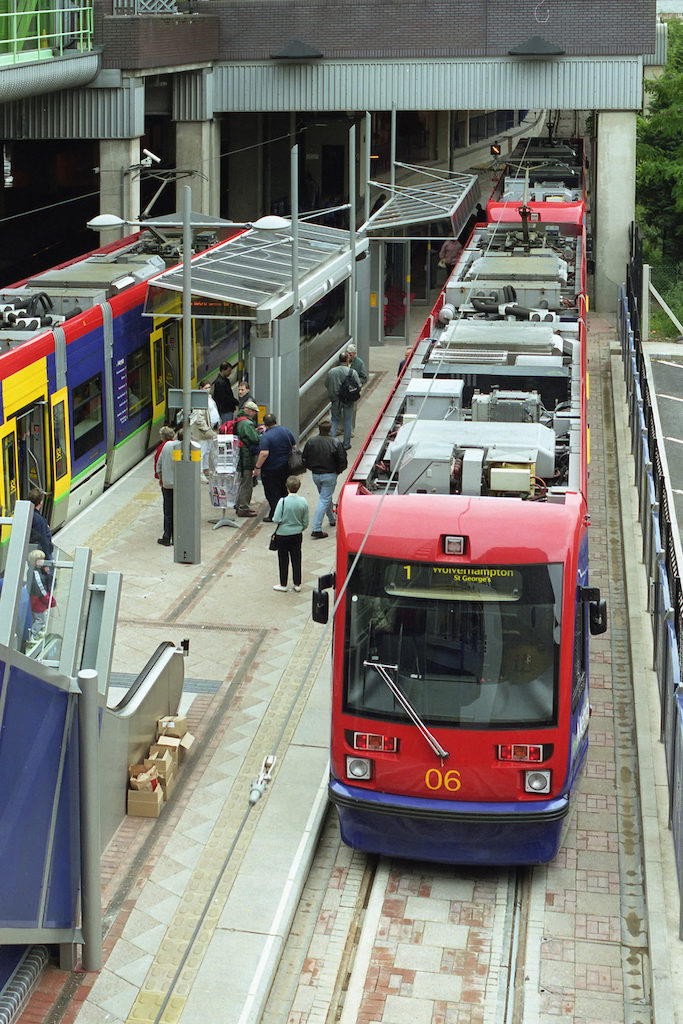
Additional trams were introduced to service on the first day, a public holiday, to cope with potential demand. T69 tram 06 and two others provide the unusual spectacle of three trams at Birmingham Snow Hill’s platform I © David Cole
Trams returned to the streets of Birmingham in December 2015 when Line One was diverted from its platform within Snow Hill heavy rail station to run on grass reservation and then on street to a temporary city centre terminus at Bull St. A replacement for the Snow Hill stop opened at a later date. Early in 2016, street running was extended two stops to the Grand Central stop, named after the shopping centre above Birmingham’s main heavy rail station, New St. It would be December 2019 before the next section, a further two stops to Birmingham Library as part of the Edgbaston extension opened.
Picture gallery (please click to enlarge):
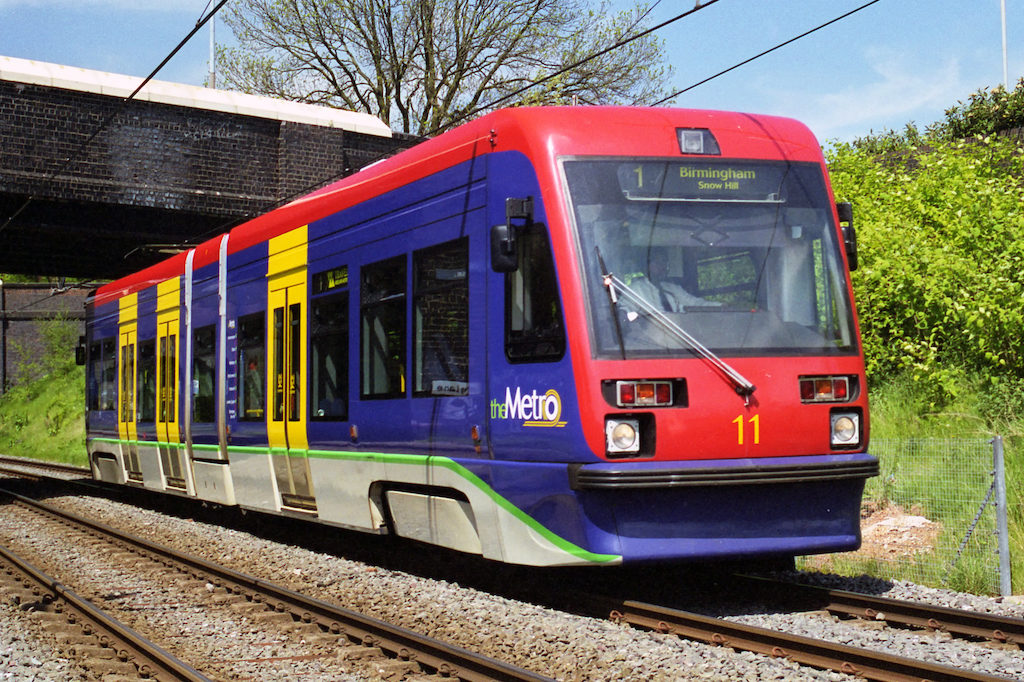
For nearly ten years, this was the public image of Midlands Metro although the trams later gained advertisements above the windows. T69 tram 11 is seen on the former railway formation in West Bromwich during Spring 2000 I © David Cole 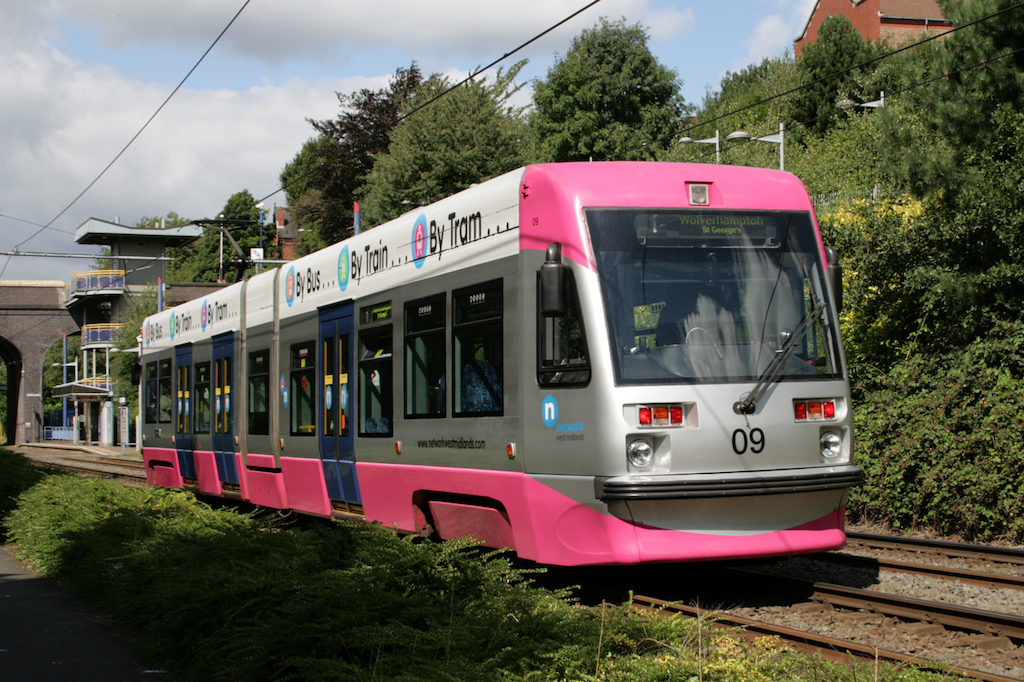
The beginnings of a new image were marked with the re-entry to service of T69 tram 09, formed from the damaged parts of trams 09 and 10. This was outshopped in the then Network West Midlands colours as seen approaching Lodge Road, West Bromwich on 23 August 2008 I © David Cole 
It was 6 December 2015 when the first extension opened. Early that morning CAF tram 35 breaks the banner at Birmingham Bull St welcoming trams to the city’s street for the first time in over 60years. The tram is discreetly named after Councillor Angus Adams, a tireless campaigner for public transport in the region who had recently passed away. I © David Cole 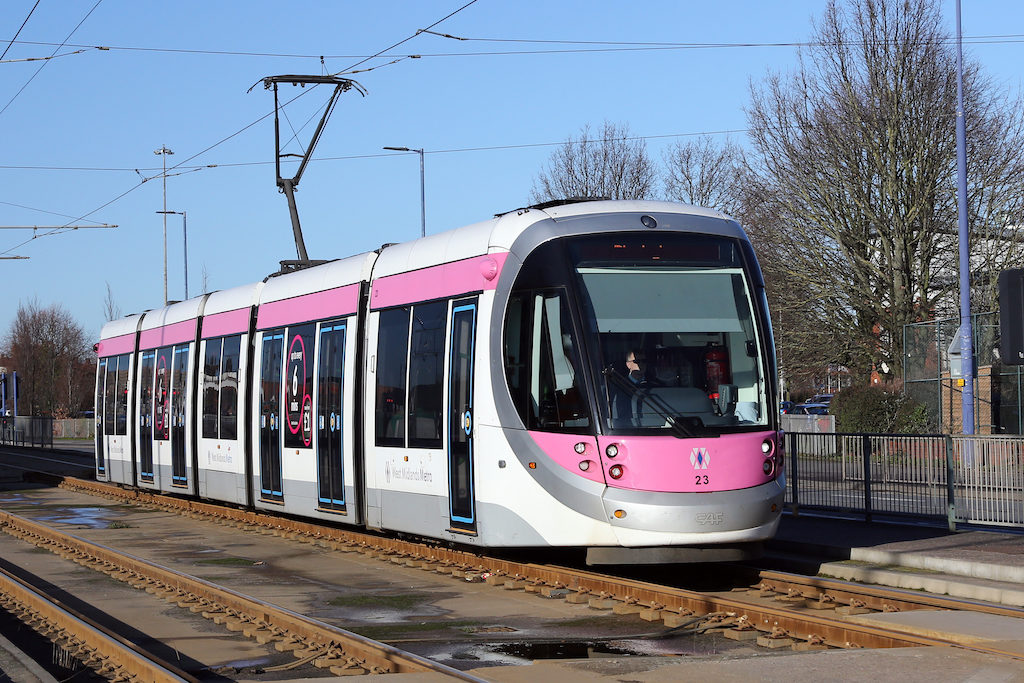
With the withdrawal of the T69 trams, the magenta and white liveried CAF trams were the public image of the Metro for several years. Tram 23 is on the reserved slab track in Bilston Road, Wolverhampton on 17 January 2019 I © David Cole
Trams returned to the streets of Birmingham in December 2015 when Line One was diverted from its platform within Snow Hill heavy rail station to run on grass reservation and then on street to a temporary city centre terminus at Bull St. A replacement for the Snow Hill stop opened at a later date. Early in 2016, street running was extended two stops to the Grand Central stop, named after the shopping centre above Birmingham’s main heavy rail station, New St. It would be December 2019 before the next section, a further two stops to Birmingham Library as part of the Edgbaston extension opened.
Picture gallery (please click to enlarge):
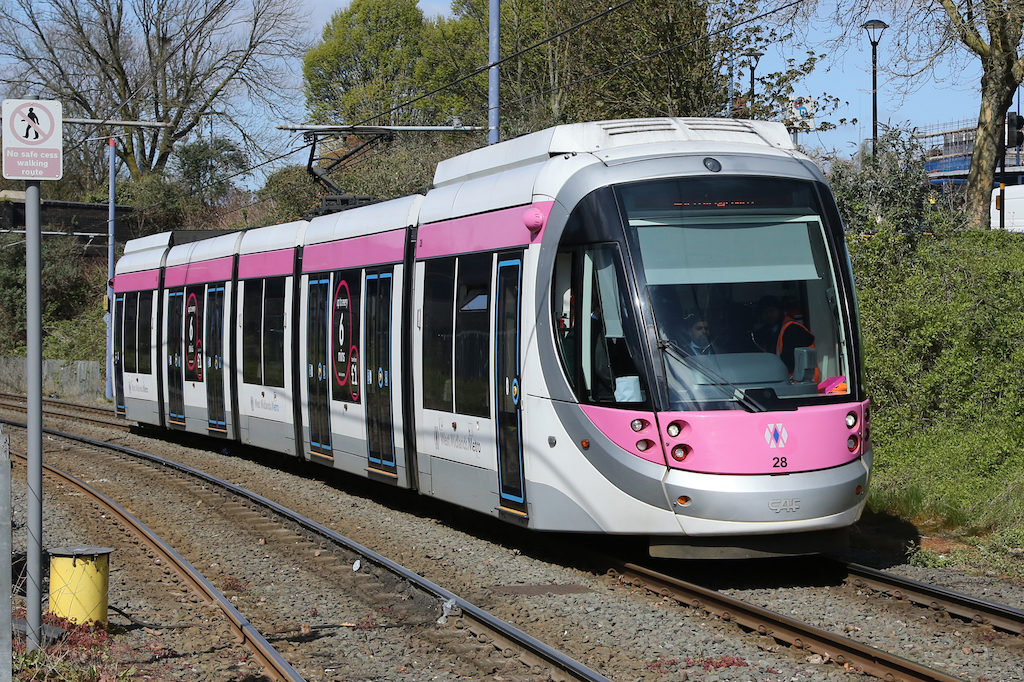
Several CAF trams were fitted with batteries before the blue livery was introduced. Tram 28 approaches West Bromwich Central on 10 April 2019 I © David Cole 
CAF tram 31 was the first to gain the blue West Midlands Metro livery and is seen departing Birmingham Bull St on 21 July 2018 I © David Cole 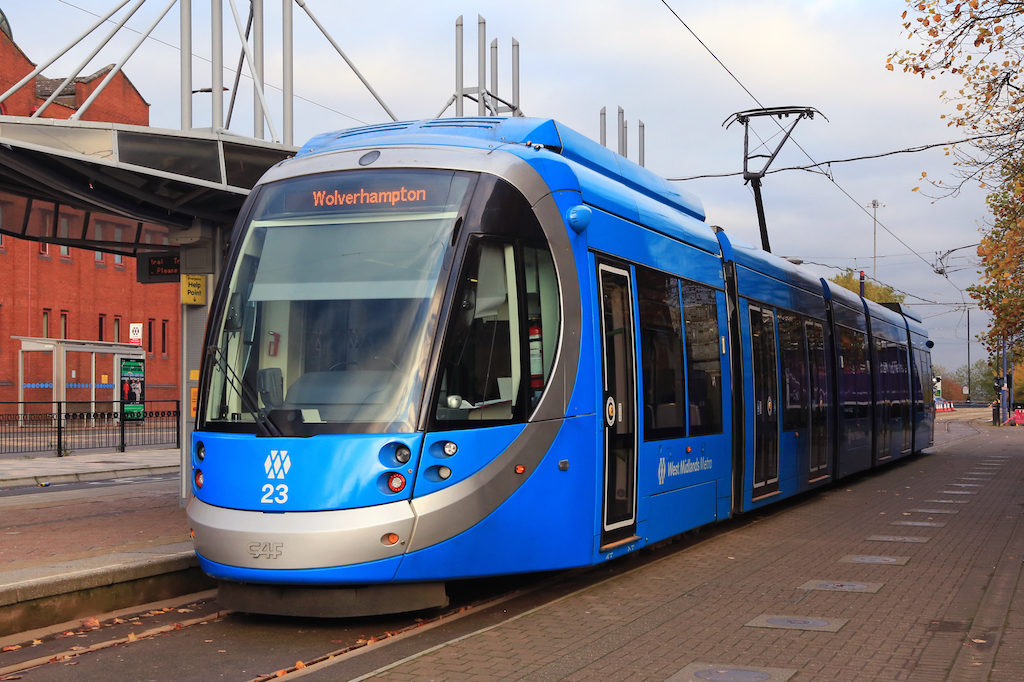
The current public image of the Metro, CAF tram 23 at the remodelled Wolverhampton St Georges terminus on 8 November 2019 I © David Cole 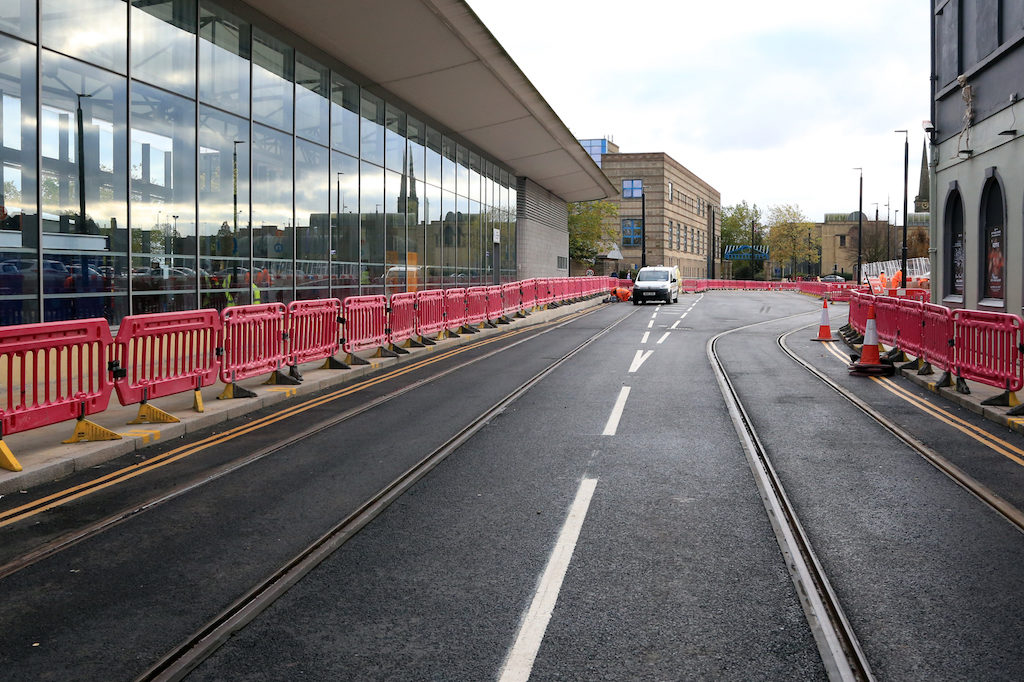
Tracklaying on the Wolverhampton extension alongside the city’s bus station was almost complete on 8 November 2019. Trams will use battery power on this section I © David Cole
In the interim, changes to the local government structures in England established the West Midlands Combined Authority with responsibilities including transport as successor to Centro. On 24 June 2018, it took operation of the Metro in house, Midland Metro Ltd (MML) replacing Travel Midlands Metro when the latter’s concession expired. A house style has been developed for the transport modes within the Combined Authority’s control with blue as the chosen colour for the trams, now branded West Midlands Metro. The Library extension is the first to eliminate the use of overhead wires, trams running on batteries which have been retrofitted to the current fleet.
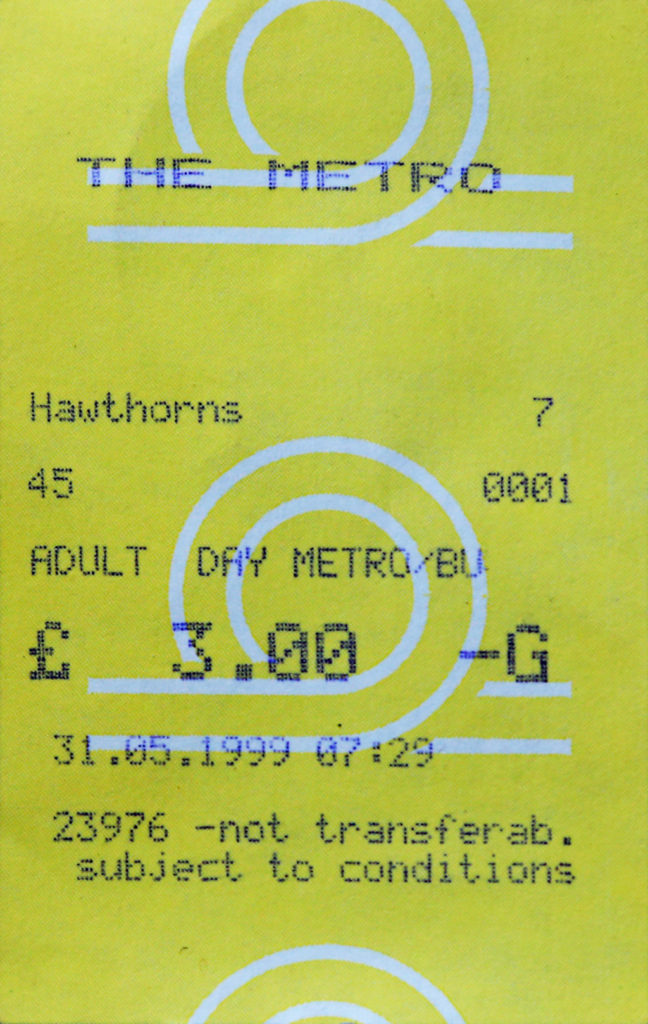
A new Midland Metro Alliance, including Colas, Barhale, Bouygues UK and Auctus Management Group has been appointed to deliver a number of approved network extensions, including, in Birmingham, the Edgbaston extension and a new route east of city centre to serve the HS2 (High Speed Rail) station and the Digbeth area. In Wolverhampton, work on an extension past the city’s bus station to serve the rebuilt heavy rail station is well advanced. Very recently, preparatory work has commenced on the most significant expansion so far, the 11km link from Line One at Wednesbury to Brierley Hill. Due to open in 2023, this also uses an abandoned railway formation (freight traffic ceased in 1993) but includes street running through Dudley town centre and roadside reservations provided during construction of that town’s bypass in 1999.
An overview of the line and future extensions can be found here:
http://www.urbanrail.net/eu/uk/bir/birmingham.htm
